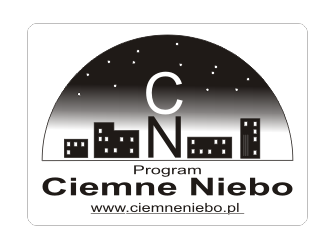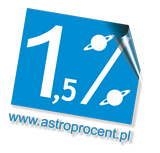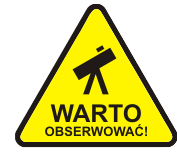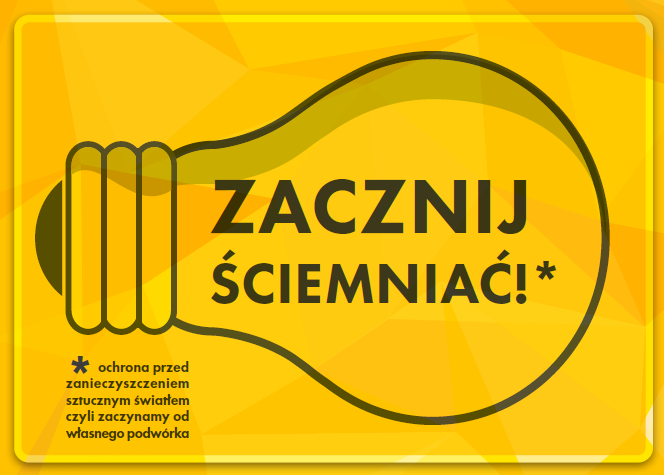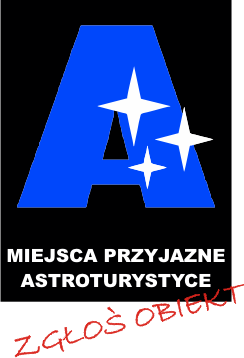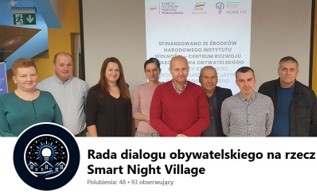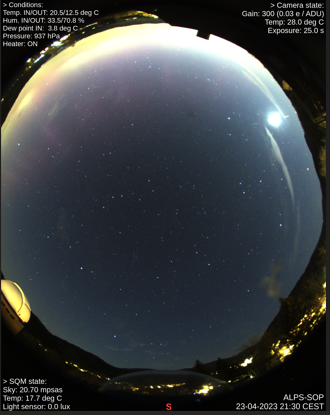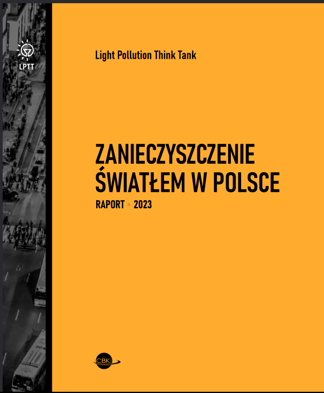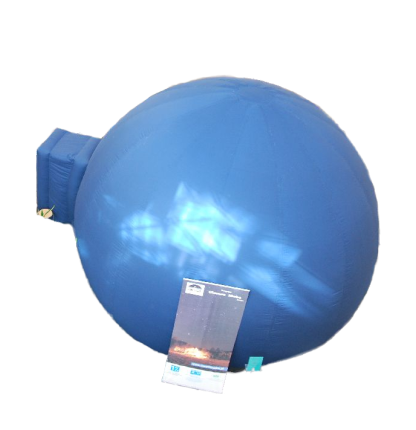Increasing problems with artificial light in Poland are becoming more and more troublesome, not only for city dwellers, but also for people living in smaller towns and villages.
The issue has been particularly important for dark sky and fauna observers, whose increasingly worrying information appear on different Internet forums, in specialist magazines, theme organizations, during various scientific events etc.
The issue has been particularly important for dark sky and fauna observers, whose increasingly worrying information appear on different Internet forums, in specialist magazines, theme organizations, during various scientific events etc.
Simultaneously, the lack of Polish standards regulating light pollution combined with an unskilful policy regarding the lighting of streets (faulty belief that the higher energy loss, the higher profit generated for the power station) inspired various social environments to take up first steps towards improving the condition of the Polish dark sky.
The first effective initiator of the campaign was the POLARIS-OPP Association (with its head office in Sopotnia Wielka), organizing a Polish-Slovakian convention for astronomical societies that took place in 2005 at the Silesian Planetarium in Chorzów. It was in 2004 that a nationwide “Dark Sky” program was officially established by the POLARIS – OPP Association board members.
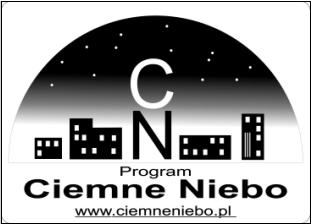
The main postulates and concepts have been formulated, aiming at the protection of Polish heritage, which is particularly precious from a historic point of view (Copernicus).
The main guidelines of the program are in accordance with the International Dark Sky (IDA) activities:
The main guidelines of the program are in accordance with the International Dark Sky (IDA) activities:
- Devising suitable models of street lamps, which is fundamental in trying to eliminate artificial light pollution over the Polish horizon. We cannot directly influence the “private” owners of halogen lamps that illuminate temples, industrial, recreational and commercial buildings. However, replacing the obsolete lighting of the Polish streets with properly designed street lamps will not only allow the light to be pointed downwards, but also yield savings for the public administration, as electricity bills will decrease.
- Registry of settings where systematic sky observations are being conducted, especially astronomical observatories, institutes, scientific circles, clubs and associations that lead group sky observations and also places of historical importance for astronomy, etc. Such territories should be given top priority among places where the street lamps are to be replaced. The improvement of visibility in such regions would be noticed and appreciated immediately by the local dark sky observers. The efficiency of their work would improve, producing more accurate observation results, it would also reinforce public interest in astronomy and facilitate its popularization among society.
- Reaching agreements with local governments about temporary dimming of street lamps. In some cities (in countries like Austria or Germany) time switches are being installed, decreasing the brightness of lighting when traffic is significantly reduced – e.g. after midnight or after 2 a.m. However, complete switching off street lamps is currently avoided (at least in bigger cities, though there are places where the lights are being switched off in the middle of the night), only the power is being reduced. In Austria and Germany street lamps that can be switched off at a particular period during the night are marked with special white rectangular boards with a broad red horizontal stripe.
- Replacing traditional street lamps with “intelligent light” in settings where e.g systematic astronomical observations within large groups of interest are being held. Choosing proper lighting to decrease direct light emission from street lamps and reducing the need for emitting reflecting light from illuminated surfaces to a minimum is fundamental to effective protection against light pollution. Contemporary steet lamps are usually controlled by either automatic astronomical drivers that turn the street lamps on at dusk and turn them off at dawn, depending on the season, or switches that turn the lamps on at dusk after the natural daylight is vanishing, turning them off when it becomes light enough. Those appliances can either control a larger number of light fittings, or be an integral part of a single item. They seem to be half the battle on the way to creating “intelligent” and dark sky-friendly street lamps.
- Fund-raising aimed at replacing old light installations in chosen settings. The POLARIS – OPP Association suggests two main sources that fund-raising could start off with. The first one resembles foreign methods used to raise money among people that care about sky pollution caused by artificial light, also donations from companies whose business profile is connected with the lighting issues. In 2006 the POLARIS – OPP Association took the first steps towards creating actual financial results by launching the Dark Sky fund, which is baseed on money received from 1% tax allowances dedicated to astronomy (“1% for Astronomy”campaign). The disbursement of funds have been decided on at the First Congress of Astronomical Societies in Chorzów.
- Compiling brochures and organizing conferences. The subject matter concerning the dark sky is not exclusive only for astronomical communities. It is necessary to widen the view on the program’s potential capabilities, as it influences many different fields of economy and social life. It is not advisable to only depend on statistics given by satellites, astronomers and power station workers. Organizing annual meetings of Astronomical Societies, during which issues concerning the protection of the dark skies in Poland are being raised, serves as a good example.
- Announcing annual competitions for grants for innovative solutions that help protect the dark sky in Poland. The purpose of this social initiative is not only to engage as many people as possible, especially kids and youth, as they hold the responsibility for the future of the dark sky, but also to make people in general familiar with the issue of dark skies. The symbolic funds could be raised from the dark sky protection fund or the forementioned “1% for Astronomy”campaign, which is run by the POLARIS – OPP Association, the only non-governmental organization in Poland that is dealing with astronomy (www.astroprocent.pl ).
- Searching for institutional partners, both in Poland and abroad, to cooperate on the „Dark Sky” project. This does not mean that cooperation partners should only consist of specialized organizations like the American Dark Sky Association (I.D.A.), or the Italian ISTIL ( Istituto di Scienza e Tecnologia dell'Inquinamento Luminoso). The program welcomes cooperation with schools, universities, astonomical clubs, planetariums, observatories, national parks, governmental institutions, environmental institutions and any other individuals that are not indifferent to the issue of protecting the dark sky in Poland.
- Media advertising. According to the International Dark Sky (Association), the fist satellite pictures of Earth at night were collected at the beginning of 1970ties, the first global maps of artificial lighting of our planet were created at the end of 1980ties. The first organization that dealt with the protection of the dark sky was established in 1988 in the USA. Despite the fact that to this day many more similar initiatives were launched and a few dozen of Internet sites dedicated to dark sky protection created, still the majority of society does not have the slightest idea about the issue. The problem is being suppressed by the attention given to energy-saving, wchich is only a partial solution. Therefore promoting the protection of the dark sky in mass media, thus reaching the widest circle of people, is the aim of any program of this sort. This problem should be presented and spoken about in terms of environmental threats, as opposed to globar warming and waste pollution, declining of the dark sky is a much faster progressing phenomenon. Educating the public about the threats and goals of the campaign should be intensified with the use of common public relations policies, the use of brand symbols, national and international promotional events, radio and tv shows, information on the Internet, etc.
The above-mentioned guidelines will be implemented to the best of the program’s abilities, depending on the available funds. Surely, many years will pass before we could consider the protection of dark sky in Poland effective. However, first steps should be taken immediately. We therefore encourage you to join in effort for a better dark sky.
